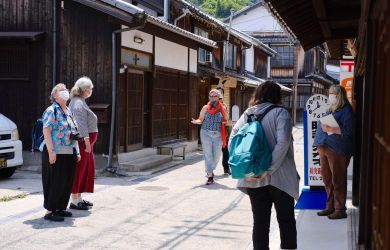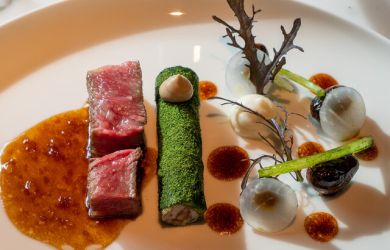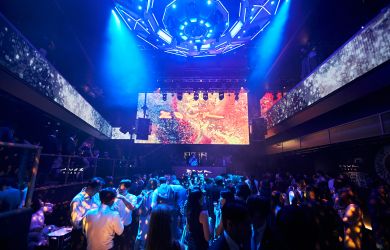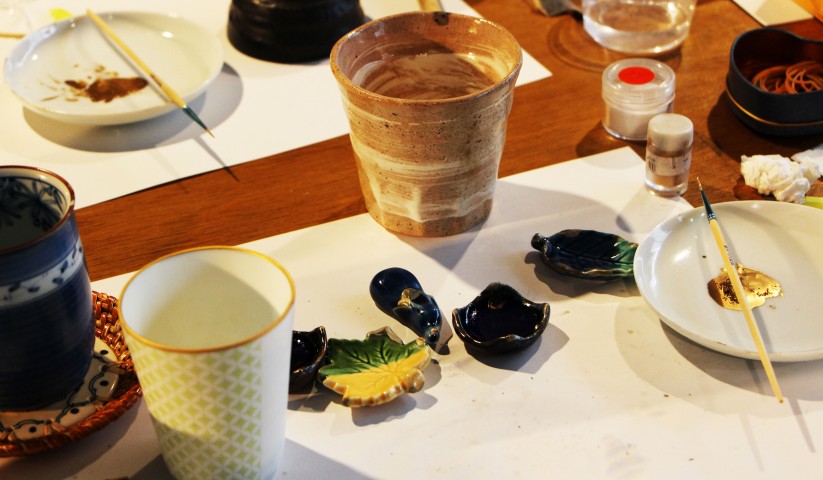
December 13, 2016
Unbroken With Gold
The art of turning ugly breaks into beautiful fixes
No one likes to rummage through trash cans. Yet there I was, crouching in my kitchen with breath sucked in, arms-deep, feeling through eggshells, plastic wrappers and unidentified goo. Finally, I retrieved what I was looking for. The pieces of porcelain were once a bowl I used for soy sauce. Earlier that day, I had signed up for a kintsugi workshop, and I knew just what I wanted to resurrect.
The Japanese art of kintsugi is one of repairing pottery that was accidentally broken or chipped. It’s a technique that uses lacquer mixed with powdered gold, silver or platinum to glue pieces back together. The effect leaves striking metallic veins running through the pottery.
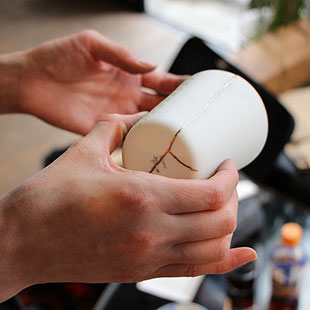
Late on a Saturday morning in a cold drizzle, the door to Kontacto East studio in Nishiazabu stands open, emitting a glow and the gentle hum of voices. Inside is the fully-booked workshop of 10 students. The teacher, Midori Sasahara of Kintsugi Oh!LaLa, flits around the large communal table.
She peers over the shoulder of each student and helps us individually. Sasahara-san’s English was good enough that I easily followed each step. Her style is a modern version of kintsugi using super glue, putty and gold-colored brass powder. We are each able to fix two to three items in the three-hour workshop. She told me the traditional technique can take one to three weeks, a process in which craftsmen use long-drying resins and lacquers from trees instead of super glue and putty. They also used real gold to paint over the cracks.
Kintsugi is about accepting that something has been broken, rather than denying it by throwing it away. The breakage and repair becomes part of the object’s identity. In the process, we create something that we come to love. It’s known as the IKEA Effect, where we connect with objects that we’ve created ourselves and ascribe a special meaning to them (just as we feel affectionate towards our IKEA furniture because we’ve arduously assembled it ourselves).
It’s raining even heavier outside, and the door is still open to the street. Occasionally, someone under an umbrella walks past and looks in. It feels very cozy inside: warm and dry, with jazz playing in the background. The loft-like studio space is beautifully designed with high ceilings, exposed ducts and pipes and big wooden floorboards. It’s comforting knowing we’re here for a few hours with no rush to keep up with everyone else.
I sensed that this kind of workshop was a way for people to meet others. Everyone concentrates on their own work but listens in on the conversations around the table. No one is too shy to look at how their neighbor is doing and compliment them on their work. Occasionally everyone chuckles at something someone at the table has said.
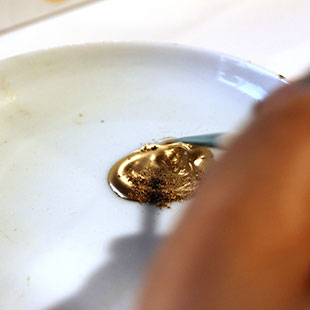
In practice, kintsugi is not that creative—there’s only really one possible outcome in sticking the pieces back together as they were. But kintsugi provides a beautiful philosophy to living creatively. It reminds us that we can fix problems we face in life. Things will break but can be accepted and made into something more meaningful to us. Creativity is about taking risks and expressing ourselves, making our everyday world more vibrant.
My finished bowl now sits in a privileged position on the entrance table at my apartment. It serves a new purpose of holding my keys. The bowl has been revived and I love it more than ever.
Kontacto East organizes kintsugi workshops a few times a year. They are a small hardworking team who connects local creatives with the community. They collaborate with local artists, foodies and craftsmen to run different workshops throughout the year. Look out for other workshops, including modern-style bonsai classes, traditional calligraphy workshops, and specialty food courses making bread, miso paste or natto from scratch.
Kontacto East. 1F, 2-25-11, Nishiazabu, Minato-ku. Nearest station: Roppongi. 03-6427-7725. welcome@kontacto.jp. kontacto.jp
OTHER WORKSHOPS AROUND TOKYO
HOMESTYLE COOKING CLASSES
From top sushi restaurants to your local ramen joint, Japan’s restaurants are exceptional. But what do Japanese eat at home? Learn to prepare home cooked meals that locals really make in a cozy little home kitchen. There are several menus to choose from, including artistic bento boxes, vegetarian menus and a simple “Everyday Meal in a Japanese Home”. www.mayukoslittlekitchen.com
SAMURAI CLASS
There are a handful of modern-day samurai around who offer private or group lessons. We took a traditional swordsmanship class with a trained katana master through Viator, a TripAdvisor company that lets you experience unique activities with locals. We could choose the location (a public park or local dojo) and even hold our instructor’s very sharp 500-year-old sword. www.viator.com/search/samurai
PLASTIC FOOD MAKING
Learn to make a delicious-looking meal using only one ingredient: plastic. You’ll come across replica foods designed to lure you inside at almost every restaurant in Japan, and now you can create the realistic looking shapes, texture and colors yourself. These classes are not available in English, but it’s still possible to follow the steps if you don’t speak Japanese. www.ganso-sample.com/experience



